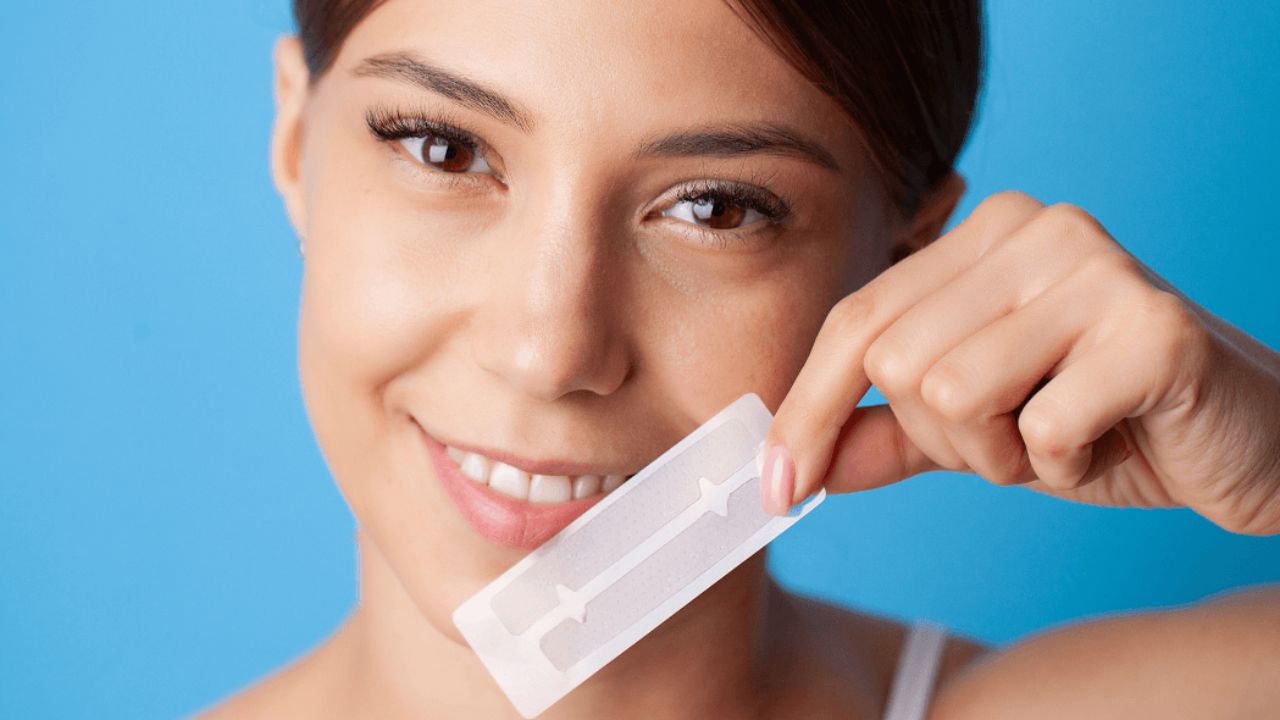Oral products have been on the rise in different ways. Through these products, one can get a brighter smile. Of these methods, teeth whitening dry strips and the normal types of whitening products are the popular options. Every approach has advantages and disadvantages. To help readers select the best product, this article compares Professional Teeth Whitening Dry Strips with traditional whitening treatments.
Overview of Teeth Whitening Dry Strips
Dry teeth whitening strips are applied to the teeth using a gel. They are thin and flexible. These tooth-whitening strips are designed to adhere to teeth. These lighten the stains over a few days. Typically, they are administered for a brief period or as directed by the manufacturer. The following active ingredients in the gel work to dissolve and remove stains from tooth enamel.
Benefits of Dry Teeth Whitening Strips
Practicality: One of the easiest teeth-whitening products available is dry strips. They are also whitening gel applied; this means that one does not have to mix or prepare anything. Users place the strips on the teeth and remove them after the indicated amount of time has elapsed. This convenience makes them ideal for those with a busy schedule in terms of preparing for their exams.
- Affordability: Dry strips are, in general, cheaper than some of the other conventional whitening processes. They are affordable to people who want to have a change in their smile without having to spend a fortune to seek dental treatment.
- Minimal Sensitivity: In this case, users discover that teeth whitening dry strips produce minimal tooth sensitivity as opposed to other techniques. The strips are supposed to release a certain measure of the whitening agent, which can minimize the chances of irritation during the whitening process.
Traditional whitening products
Conventional teeth bleaching systems comprise of the whitening toothpastes, gels, trays, and professional treatments that are carried out by dentists. These products employ distinct active ingredients that help to whiten the teeth and while most of them are easy to use, some of them may need extensive preparation or application procedures.
Advantages of Traditional Bleaching Agents
- Professional Treatments: In general, the professional treatments which are offered by dentists for patients are far more efficient in terms of the extent of teeth whitening. Such treatments are generally performed with stronger whitening agents and may also include other processes such as laser or light treatment. If one desires a more intensive effect of the bleaching process, then professional treatments are considered to be more effective.
- Custom Fit: The following is a list of the traditional methods of teeth whitening that are used today; The whitening trays: these are trays that are made to fit the individual’s teeth. This implies that the whitening gel is placed on all the teeth so that all are bleached to the same standard. Custom trays also eliminate any chances of gel leakage, and enhance the contact with the tooth surface.
- Long-Lasting Results: Virtually all the whitening procedures including professional treatments are long-lasting than the products available in retail stores. The percentage of the whitening agents and the expertise of the dentists enable the achievement of a permanent change in the color of the teeth.
Comparing Effectiveness
Comparing the efficacy of teeth whitening dry strips and other products several aspects have to be considered. Teeth whitening dry strips are quite useful in eradicating external stains and can cause slight changes in the shade of the teeth. They are perfect for people who only have minor discoloration or people who want to avoid going to the dentist.
On the other hand, routine whitening goods, especially professional ones, hold the promise of a higher and longer-lasting effectiveness. Professional treatments are most helpful for people with heavy or strong stains since they involve stronger chemicals and different approaches.
Some Factors and Choosing the Right Method
Teeth whitening dry strips and other products should be compared when it comes to the cost, the degree of whiteness, and personal preferences. Teeth whitening dry strips can be considered an efficient and affordable option for those who are searching for simple home treatment. On the other hand, traditional whitening products, especially professional ones, are more appropriate for those who want to have a more rapid and long-lasting change. It is also important for any person to seek the advice of a dentist before embarking on any whitening regimen, more so for those with sensitive teeth or any other dental complications. It is always better to consult a dentist who can give exactly the recommendations that are needed for the particular patient and make sure that the chosen method is suitable for the patient’s teeth.
Conclusion
Teeth whitening dry strips and traditional whitening products: each has its advantages and disadvantages. Thus, the dry strips are convenient, cheap, and non-sensitive, which is good for most people. Professional treatments, which are a part of conventional whitening procedures, can be used to achieve greater and longer-lasting changes. Thus, by comparing the potential benefits of both methods and addressing a dental specialist, one may decide on a further treatment strategy and get the desired shiny smile.


